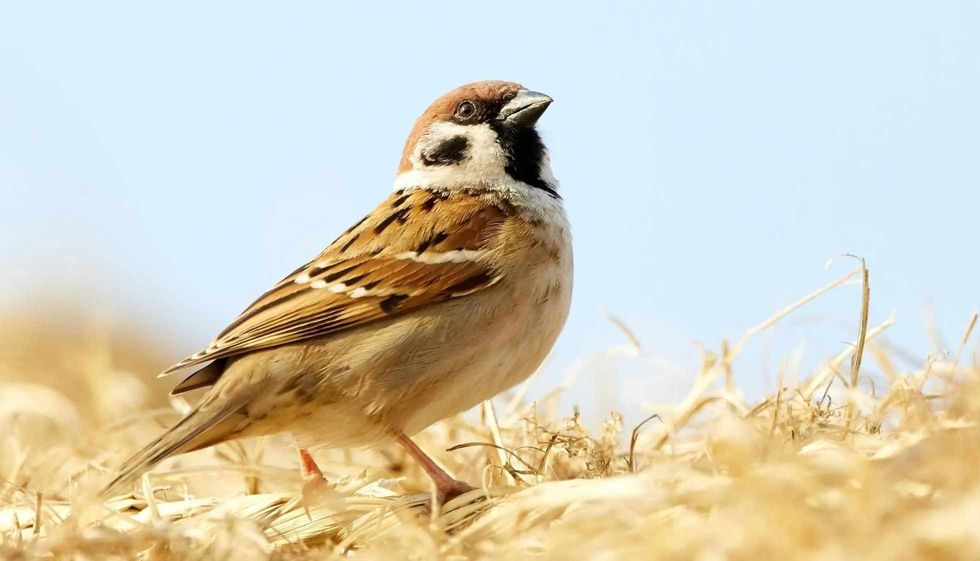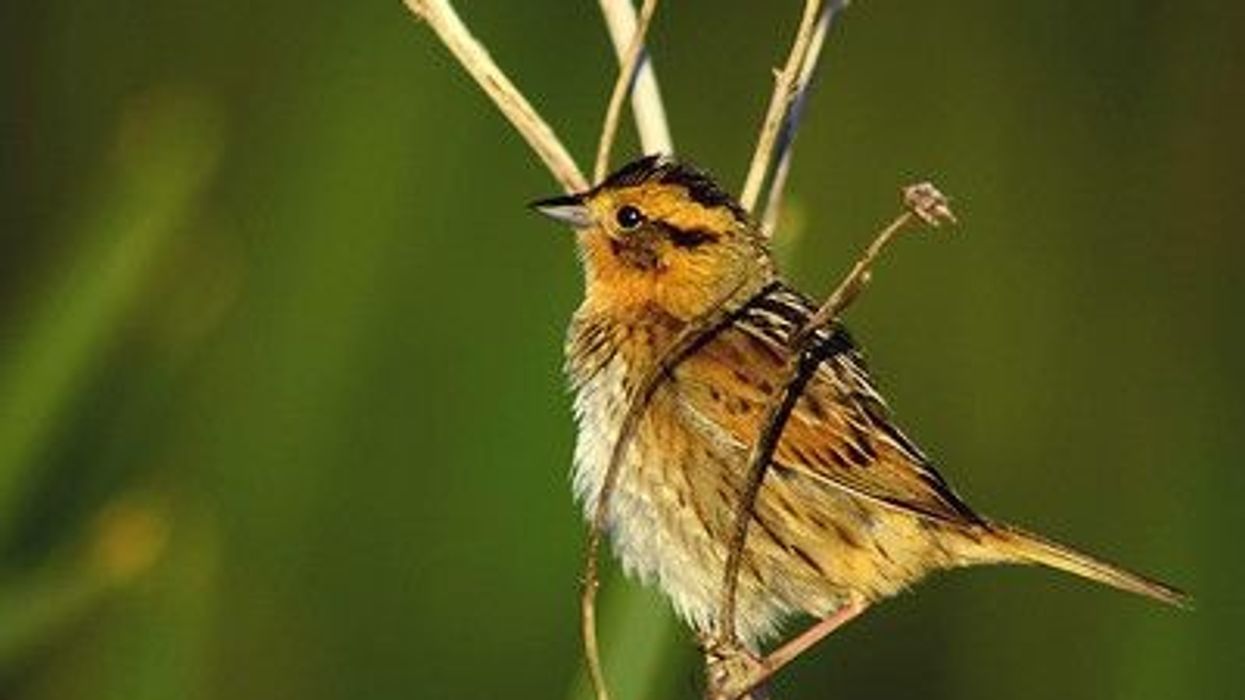House sparrows are very commonly found birds. They belong to the Passeridae family. History says that the ancient Romans introduced the sparrow to Europe from North Africa. These birds live in rural and urban areas all over the world.
People living in the cities keep little bowls of food grains for these birds. They build their nests on their own. Owing to their small size, these bird species are preyed upon by various predators.
Some of the most well-known sparrow predators are dogs, cats, foxes, birds, snakes. Here are some interesting facts about sparrows. The sparrow nest houses a special entry hole that prevents other predators from entering. After reading these fascinating sparrow facts, do check these tawny frogmouth facts and kagu facts.
Sparrow Interesting Facts
What type of animal is a sparrow?
A house sparrow is a bird who likes to live among other sparrows. They are known to migrate in flocks and breed in the middle of the year.
What class of animal does a sparrow belong to?
A house sparrow belongs to the birds class of Aves. They come from the Passeridae family.
How many sparrows are there in the world?
According to the research, there are 540 million sparrows in the world. House sparrows are nowhere near extinction.
Where does a sparrow live?
A sparrow lives in the woods and in deserts. Apart from isolated places, sparrows can also live among human habitation in either urban or rural settings.
What is a sparrow's habitat?
The sparrow species is dependent in some way on humans for food. It eats what humans grow. That is why the sparrow habitat is always found near human settlements, both rural and urban.
These birds avoid staying in extreme environmental conditions, and away from humans. This species builds their own sparrow nests on trees, buildings, houses in the cities. They are known to be North American natives.
Who do sparrows live with?
The house sparrow lives with other types of sparrow and other bird species in the forests.
How long does a sparrow live?
A sparrow can live for three years. Sparrows usually don’t have a long lifespan in the wild.
How do they reproduce?
Sparrows are supposed to be monogamous birds. But very often, extra-pair copulations are observed away from the couple’s nesting site in this species. In the breeding season, the male sparrows sing their sparrow song with the hope of attracting a female.
When a female sparrow is attracted towards a male sparrow, they will mate multiple times before females lay eggs. In comparison, breeding the male mounts the female. A female house sparrow can lay 4-5 eggs at a time.
The incubation period before the sparrow eggs hatch is 11-14 days. The nesting babies are looked after by both parents. Sparrows start mating as soon as the breeding season begins.
What is their conservation status?
The conservation status of sparrows is of least concern as their population is stable across their habitat.
Sparrow Fun Facts
What do sparrows look like?
House sparrows have feathers in the following colors brown, buff, white, gray, and black. Male house sparrows have a distinct gray-colored crown on their head, which the female house sparrows lack.
Their under part is grayish-white in color. The feathers on the backs of these birds are stripped of brown, buff, and black colors. Their legs are brown in color, and they have a black colored beak.
How cute are they?
House sparrows are extremely cute. Their small size and characteristic brown color have a homely feel to them.
How do they communicate?
House sparrows chirp. These birds make chirping sounds at various frequencies. Their voices can have a high as well as low pitch. They chirp similar sounds to attract mates during the mating season. Their chirping is also a medium for keeping tabs on every member of the group. A chipping sparrow can easily be spotted by humans.
How big is a sparrow?
A sparrow is 5.5-7.0 in (13.97 - 17.78 cm) length, including its tail. Their wingspan ranges between 7.5-9.8 in (19-25 cm). They are very small birds. Sparrows are usually 10 times bigger than a caterpillar.
How fast can a sparrow fly?
A sparrow can fly at the speed of 28.54 mph (46 mph).
How much does a sparrow weigh?
A sparrow weighs approximately 0.8-1.4 oz (0.022-0.04 kg) sparrows’ lightness allows them to fly at a greater speed.
What are the male and female names of the species?
No sex-specific names are assigned to house sparrows. You can simply refer to them as sparrows.
What would you call a baby sparrow?
Sparrow babies are called chicks. A female sparrow takes care of its babies until the chicks mature.
What do they eat?
House sparrows are known to prey on insects for a living. Besides that, the sparrow diet includes corn, oats, wheat, sorghum, ragweed, crabgrass, sunflower seeds.
Are they dangerous?
No, not at all. The house sparrows are the kindest birds humans can ever know. It is not easy to find birds with similar features.
Would they make a good pet?
Sparrows will most definitely make a good pet. The feeding requirements of these birds are minimum and require almost no living maintenance. They are independent and will not cause any havoc in the house. They are perfect pets for a family.
Did you know...
Research shows that the population of sparrows in the world is decreasing.
Sparrow Media named their company by getting inspired by sparrows' hard work.
North American culture calls sparrows, little brown jobs.
Different kinds of sparrows
There are various types of sparrows all around the world. Some of those breeds are the Spanish sparrow, the Sindh sparrow, the Russet sparrow, Savannah sparrow, sparrow hawk, field sparrow, white-crowned sparrow, white-throated sparrow, red sparrow, and the Eurasian tree sparrow. All these sparrows are almost of the same size.
The difference they have is in their appearance. Every mentioned sparrow has distinguishable physical features. The Sindh sparrow prefers to live in tall grasses and shrubs, while the Russet sparrow lives in mountain regions.
The symbolism of the sparrow
People believe the sparrow is a symbol of hard work. Sparrows works very hard to have a comfortable and happy life. These birds teach us to apply the same in our lives. In many philosophies, the house sparrows symbolize community, simplicity, empowerment, creativity, persistence, and productivity. The American philosophy associates house sparrows with helping spirits.
Here at Kidadl, we have carefully created lots of interesting family-friendly animal facts for everyone to discover! For more relatable content, check out these adélie penguin facts and jacana facts.
You can even occupy yourself at home by drawing one on our sparrow coloring pages.










